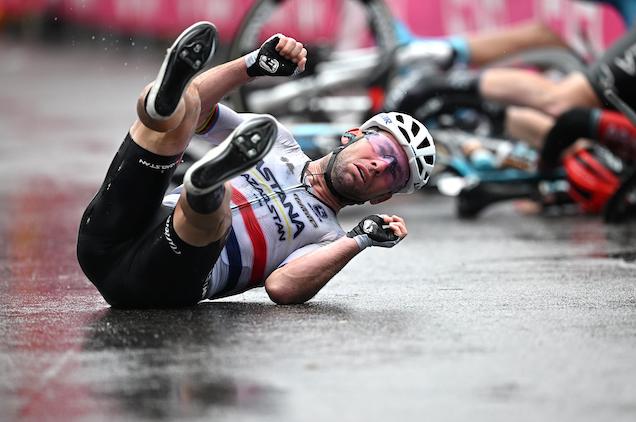Avid cyclists regularly venture far off the beaten path seeking adventure. But even recreational riders cranking around neighborhood streets risk scrapes and spills from slick roads, unseen potholes or rookie errors navigating traffic. Knowing basic cycling injury fixes to patch yourself or fellow riders up roadside until full medical care becomes available provides essential emergency preparation for every pedaling enthusiast.
Have a Well-Stocked First Aid Kit Onboard
Before hitting pavement or trail, equip your bike, backpack hydration system or jersey pockets with vital first aid gear. Waterproof zip bags keep contents intact through all conditions. Essentials include sterile gauze pads and rolls, medical tape, antibiotic ointment packets, alcohol wipes, trauma shears/scissors, vinyl gloves and blister pads. First aid kits like those found at www.seton.co.uk/first-aid-supplies/first-aid-kits offer injury-specific items like instant cold packs and tourniquets suited for common mishaps.
Managing Road Rash
Even with a quality helmet, striking the ground typically involves skidding feet or limbs first. This friction rips off skin, causing extensive abrasions dubbed road rash. The oozing wounds require urgent cleaning to avoid infection and promote healing. At the scene, gently rinse dirt and debris from scrapes with bottled water or saline solution. Apply antibiotic cream thinly, then cover loosely using a sterile pad overlapping edges secured gently with first aid tape. This protects wounds when biking home but allows air circulation. Further cleaning, antibiotic care and bandaging continues for several days helping to prevent scabbing.
Caring for Impact Contusions
Collisions and falls also commonly induce bruising, as blood vessels rupture under the skin. Treat swelling or tenderness first by elevating the area and applying a reusable cold pack from your kit to constrict circulation, reducing inflammation and pain. Cold therapy continues once home using ice wrapped in thin towels for 20 minutes every few hours until swelling subsides after 48-72 hours. Monitor for worsening pain, as this may signal a more serious unseen injury warranting medical evaluation.
Handling Suspected Fractures or Dislocations
Broken bones or joint dislocations require very cautious handling at the scene to avoid any movement which could displace fractures or tear ligaments further. Support the affected area gently, with limited pressure if possible. Apply cold therapy packs to limit swelling but avoid attempting to push any obvious deformity back into place. This stabilizes the injury until paramedics can fully immobilize and transfer for radiographic diagnosis and orthopedic realignment. Leave bumps, deformities, or intensely painful limbs completely untouched except for ice pack first aid until professional help takes over. Call for emergency transport immediately in these situations.
Recovering from Heat Exhaustion
In warm weather, cycling intensity paired with inadequate hydration plunges core body temperature, triggering weakness, nausea, and disorientation. At the first signs of excessive sweating, weakness, or confusion, get fully off the bike and find cool shade right away. Sip electrolyte drinks frequently while dousing skin with cool water until oriented and keeping fluids down. If symptoms worsen, seek emergency assistance to receive intravenous hydrating fluids. Prevent recurrence by pacing intensity on hot days and hydrating consistently every 15-20 minutes of activity with sports drink mixes.
Spotting Heart Attack Warnings
Though rare in younger athletes, underlying cardiac conditions can manifest as acute chest pain on exertion. Warning signs like localized pressure, shortness of breath, pain radiating down the arm, or a sudden racing pulse could signal a dangerous heart attack requiring immediate emergency care. Call for help at the very first symptom without delay. Administer nitroglycerin if prescribed under a physician’s direction. Provide supplemental oxygen if available while awaiting an ambulance for rapid transport and cardiac testing to clear the arteries before damage occurs.
Preparing Provisions
Just as essential as a well-equipped first aid kit is proper prior physical preparation through stretching, route planning for water/nutrition resupply points and sharing ride details with an emergency contact. Building first aid knowledge also empowers every peddler, enabling quick assistance for themselves or their community until healthcare providers can intervene. Study American Red Cross online safety courses and download offline maps to remain rescue-ready when conditioning takes you off grid.
Conclusion
When an accident happens far from home, quick reaction and knowledge bridges the gap until professional medical help can take over. Prepare for the unpredictable by packing a fully stocked first aid kit on every outing. Know how to assess common injuries, prioritize care, and stabilize conditions during those critical first few minutes. Recognize warning signs of more severe trauma requiring emergency assistance. And build self-reliance by studying basic life support principles tailored for cycling terrain. With preparation and practice, riders gain confidence to explore further knowing they can manage if misfortune strikes miles from home. First aid readiness brings peace of mind pedaling places where help remains a phone call away. Ride prepared, stay calm responding, and safely make it home even in the most extreme cycling mishaps.








